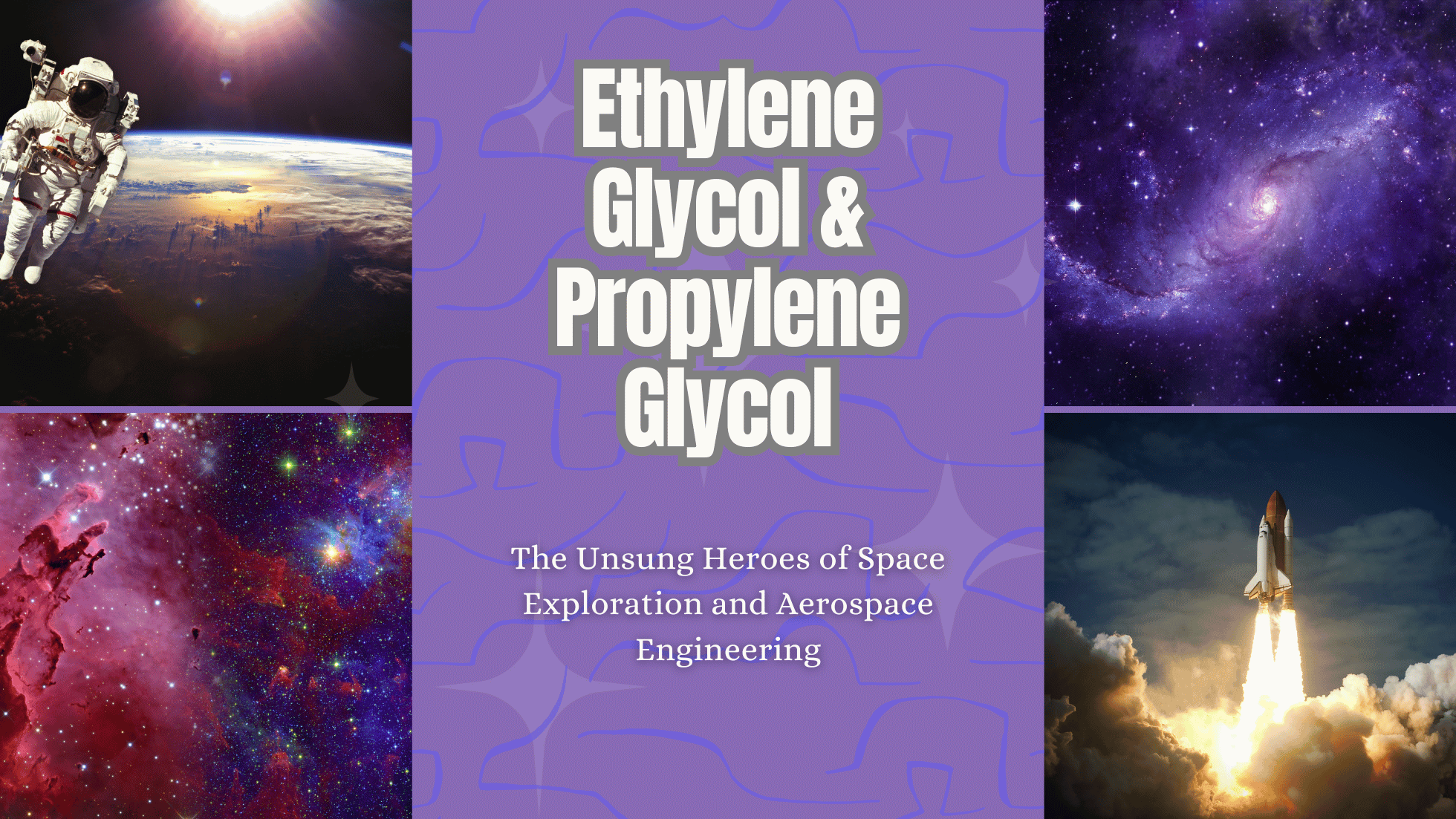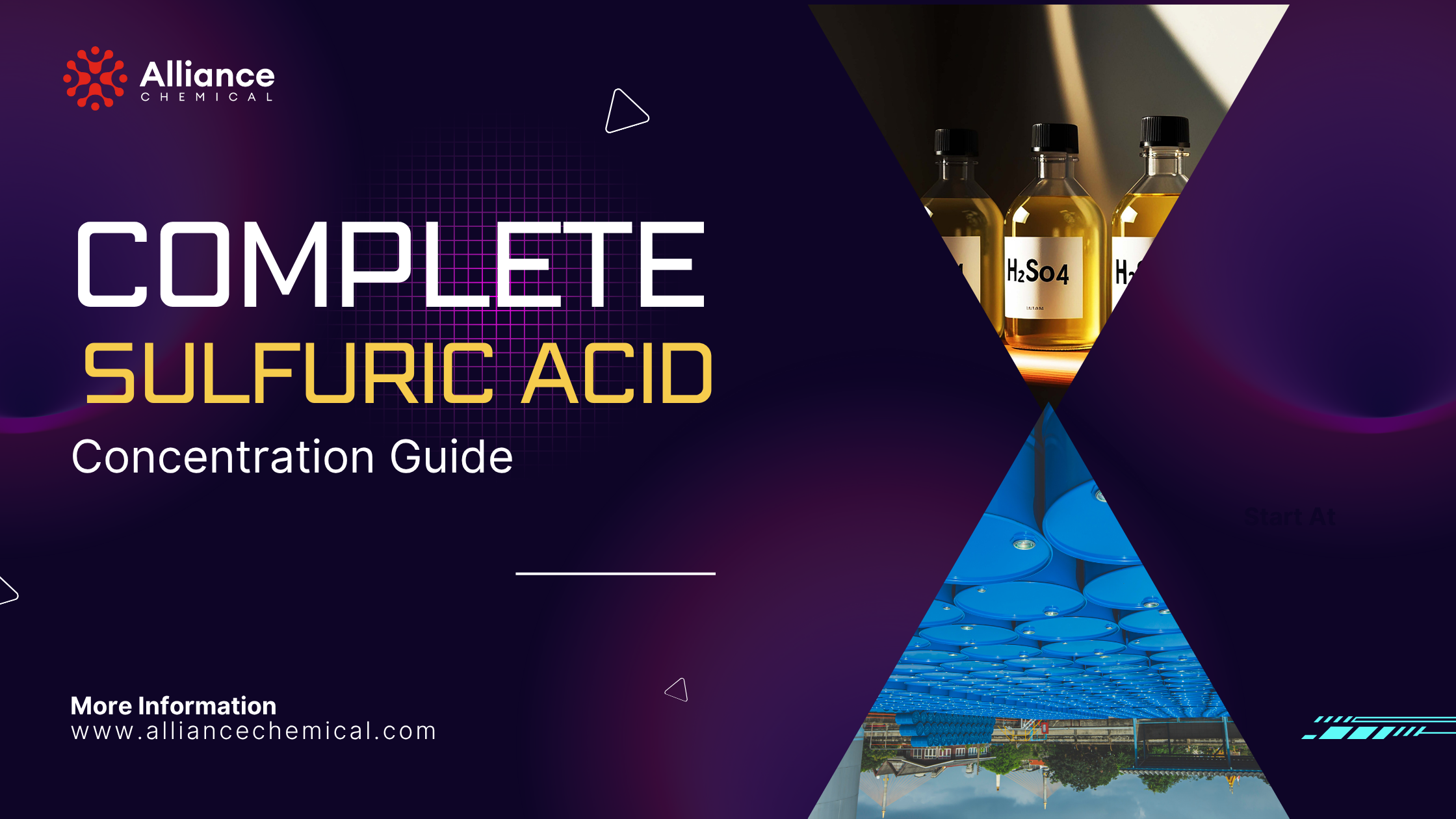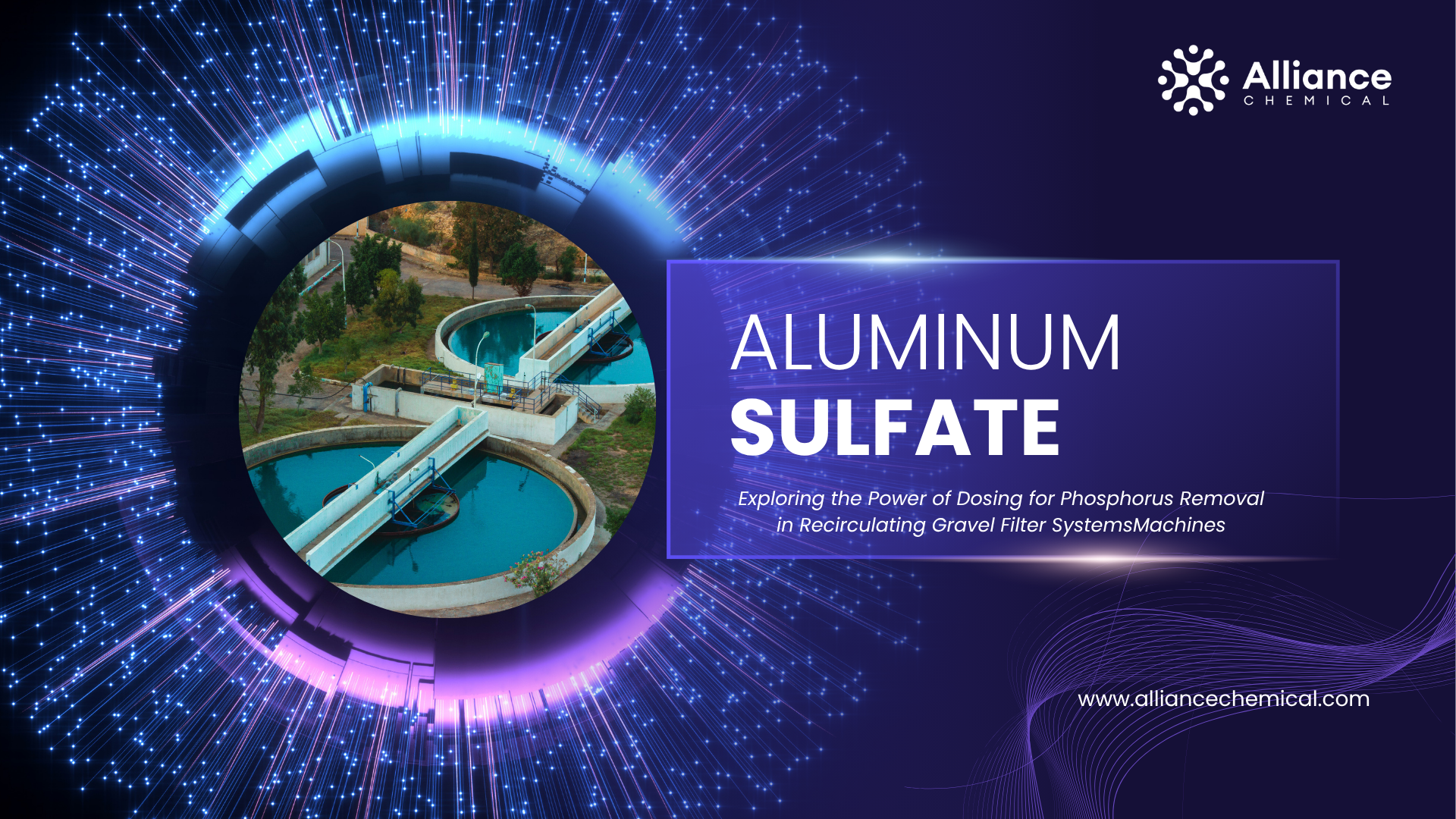
Ethylene Glycol & Propylene Glycol: The Unsung Heroes of Space Exploration and Aerospace Engineering
Table of Contents
Summary
Table of Contents
- Introduction
- Ethylene Glycol & Propylene Glycol Basics
- Production & Synthesis
- Key Properties Critical to Space Exploration
- Ethylene Glycol in Aerospace Engineering
- Propylene Glycol: A Rising Star in Space Exploration
- Coolants & Antifreeze: Bridging Automotive & Aerospace
- Synergy with Other Essential Chemicals
- Industrial & Government Overlap
- Handling, Safety & Sourcing from Alliance Chemical
- Educational Opportunities & Future Innovations
- Explore Alliance Chemical’s Key Categories
- Conclusion
When it comes to pushing the boundaries of human innovation—whether orbiting Earth, exploring Mars, or constructing next-generation airliners—thermal management is an absolutely vital concern. While the public often focuses on rocket propulsion or cutting-edge materials for hulls, there's a quieter, behind-the-scenes hero that enables these marvels of engineering to function under extreme conditions: cooling technology. At the very core of advanced spacecraft cooling systems and critical aerospace engineering designs, two chemicals often fly under the radar: ethylene glycol and propylene glycol.
In everyday life, these glycol-based fluids are most recognizable in automotive antifreeze, HVAC systems, de-icing agents, and even in the food industry. But their subtle, well-honed properties have been a cornerstone for space exploration and aerospace engineering for decades—roles that are expanding rapidly as we embark on unprecedented missions like NASA’s Artemis program, SpaceX’s Starship ventures, and emerging commercial space stations.
This expansive guide aims to provide not just a cursory look but a deep, well-rounded education on why ethylene glycol and propylene glycol are central to the success of modern aerospace. We’ll delve into how these compounds are produced, their unique chemical signatures, their modern use cases in space exploration, and how you can source the highest-purity glycols for mission-critical applications. Whether you're an engineer, a researcher, or an enthusiast, you’ll walk away with practical insights on selecting and deploying these unsung heroes for projects that span from Earth’s surface to the vacuum of outer space.
Alliance Chemical is proud to supply these essential chemicals in various grades—from Glycols and Glycol Ethers to Coolants and Antifreeze, Aviation/Aerospace chemicals, and more. Read on to learn how we support high-purity production, robust supply chains, and the ongoing evolution of these chemicals into the next-generation frontiers of aerospace innovation.
Ethylene Glycol & Propylene Glycol Basics
Ethylene glycol (EG) and propylene glycol (PG) are organic compounds belonging to the class of alcohol derivatives known as glycols. At a fundamental level, they share a functional group that includes two hydroxyl (-OH) groups, enabling them to form strong hydrogen bonds with water and other substances. This characteristic is key to their excellent temperature stabilization and solvent capabilities.
Ethylene Glycol (EG) has the molecular formula C2H6O2. It's typically colorless, practically odorless, and has a syrupy consistency. EG is well-known for its use in antifreeze, but in aerospace, it shines due to its ability to operate in a broad temperature range, resistance to freeze-thaw cycles, and compatibility with other specialized chemical additives.
Propylene Glycol (PG) features the molecular formula C3H8O2. Although similar in many respects to EG, it’s often preferred in applications where reduced toxicity or food-grade quality is important. PG finds wide use in cosmetics, foods, pharmaceuticals, and even advanced life support systems for spacecraft, where any accidental leaks must pose minimal harm to astronauts.
Both ethylene glycol and propylene glycol are found in various glycol-based blends and specialty coolant mixtures. Understanding their nuanced differences—particularly in toxicity, freeze-point depression, and boiling ranges—can be the deciding factor in advanced engineering solutions where reliability under extreme conditions is paramount.
Production & Synthesis
Knowing how glycols are synthesized can help engineers and scientists evaluate purity levels, potential contaminants, and overall suitability for demanding aerospace applications. Commercially, ethylene glycol is predominantly produced via the catalytic oxidation of ethylene (a hydrocarbon derived from petroleum or natural gas). The end product undergoes purification to remove by-products like diethylene glycol or triethylene glycol. High-purity ethylene glycol is often tested for water content, acidity, and trace metals, especially if it’s heading into aerospace or semiconductor-grade applications.
Propylene glycol is commonly synthesized from propylene oxide, another petroleum by-product. A hydration process converts propylene oxide into PG in the presence of acidic or basic catalysts. In food-grade or USP-grade contexts, additional distillation and filtration steps ensure low impurity levels, making it suitable for direct or indirect contact with humans (e.g., in pharmaceuticals or crewed space modules).
For research and aerospace use, chemical distributors like Alliance Chemical offer ACS-grade and semiconductor-grade glycols, which undergo rigorous purification methods, further removing ionic contaminants that can compromise sensitive electronics or reaction processes. You can explore these high-purity options, like our Ethylene Glycol Semiconductor Grade, directly on our site.
Key Properties Critical to Space Exploration
Space presents some of the most inhospitable conditions known to humanity: vacuum, radiation, and temperature extremes that can swing from blisteringly hot to brutally cold within a matter of minutes. For a fluid to be used in aerospace or spacecraft applications, it must consistently deliver certain critical properties:
- Low Freezing Point: Glycols remain liquid at temperatures far below water’s freezing point, making them invaluable in cryogenic applications. In the vacuum of space or on extremely cold planetary bodies, staying liquid is crucial for cooling loops and fluid handling systems.
- High Boiling Point: At the other end of the spectrum, a higher boiling point helps ensure minimal fluid loss from evaporation and stable performance in high-heat environments such as direct sunlight in Earth orbit or near-lunar day conditions.
- Thermal Stability: Both ethylene glycol and propylene glycol can undergo repeated freeze-thaw and heat-cool cycles without significant degradation. This stability is absolutely essential for reusable spacecraft and long-duration missions.
- Corrosion Inhibition: By blending glycols with corrosion inhibitors—like inhibited ethylene glycol—you protect metals and alloys used in spacecraft systems, from aluminum structures to titanium piping. Minimizing corrosion not only extends component lifespans but also reduces contamination risk.
- Safety Profile: Propylene glycol, in particular, is a standout in life-support scenarios due to its lower toxicity. In the event of a leak in a sealed environment (like a space station), PG poses fewer health risks than ethylene glycol.
Ensuring these properties meet rigid specifications often involves in-depth laboratory testing. If you’re an R&D professional looking to characterize or validate glycol performance in specialized conditions, be sure to visit our Lab Chemicals collection. You’ll find the necessary reagents—from solvents to hydroxides—to conduct thorough analytics and develop custom formulations.
Ethylene Glycol in Aerospace Engineering
Ethylene glycol has built its reputation as the go-to industrial coolant, familiar to drivers and mechanics alike. However, in aerospace, its reputation takes on a higher-level dimension:
- Thermal Control Systems (TCS): Many satellites and crewed vehicles incorporate a fluid-loop TCS, where a water-glycol mixture wicks away excess heat from sensitive electronics or life support modules. The fluid then transports that heat to radiators, which expel it into space.
- Infrared Sensor Cooling: Infrared (IR) sensors used for Earth observation, mapping, or cosmic imaging often require temperatures well below 0°C to minimize background noise. Ethylene glycol-based solutions help maintain these ultra-cold operating conditions, allowing sensors to function optimally.
- Ground-Based Testing: Before liftoff, components like rocket engines, cryogenic tanks, and avionics must endure stringent simulations of space-like conditions. Ethylene glycol solutions are integral to these environmental test stands, facilitating controlled temperature cycling in vacuum chambers or thermal vacuum ovens.
Given these demands, it’s no surprise that high-grade ethylene glycol—such as ACS-grade ethylene glycol—is in constant demand for aerospace R&D. The purity and consistency of the chemical can directly impact mission success, especially in extended deployments where fluid replacement is impossible. That’s why labs and manufacturers frequently seek out stable, reliable suppliers like Alliance Chemical to ensure there’s no compromise in quality.
Propylene Glycol: A Rising Star in Space Exploration
Propylene glycol may have found fame in consumer goods—from food additives to personal-care products—but its star is on the rise in space exploration. The reduced toxicity of PG is a major selling point, particularly in manned missions where a chemical leak could compromise not just equipment but also crew health. Below are some targeted applications:
- Heat Pipes & Life Support Coolants: Crewed vehicles and space stations rely on closed-loop systems to manage cabin temperatures. PG-based coolants minimize risk if leaks occur, as vaporized propylene glycol is less hazardous for humans to inhale compared to ethylene glycol.
- Surface De-Icing: While Earthly aircraft commonly use PG-based de-icers, future lunar or Martian habitats might benefit from similar solutions. Low ambient temperatures on the Moon’s surface (-173°C at night) and Mars’ extreme climate necessitate robust anti-freeze mechanisms for exit hatches, rover bays, and other external surfaces.
- Bioregenerative Life Support: Some advanced concepts for long-duration missions incorporate plant growth chambers or algae-based air purification. If PG somehow enters these systems, its lower toxicity profile poses fewer complications for living organisms (compared to EG).
For aerospace-grade solutions, inhibited propylene glycol stands out, as it blends the fluid’s natural advantages with powerful corrosion inhibitors. This synergy prolongs the lifespan of mission-critical hardware, reducing potential failures in the harsh vacuum of space. Beyond standard PG, USP-grade propylene glycol is also pivotal in scenarios necessitating the highest purity standards.
Coolants & Antifreeze: Bridging Automotive & Aerospace
The aerospace sector didn’t develop its thermal management systems in a vacuum. Much of the industry’s early knowledge came from automotive engineering, where ethylene glycol and propylene glycol had already proven their mettle in internal combustion engines, refrigeration trucks, and heavy machinery. As the automotive industry refined coolants and antifreezes, aerospace engineers took note, adapting and enhancing these formulations for the high-stakes realm of flight.
At Alliance Chemical, our Coolants & Antifreeze collection draws from this rich history. We offer tried-and-tested solutions that have stood up to everything from frigid Alaskan roads to scorching desert test ranges. Such battle-tested reliability is invaluable in aerospace, where a single coolant leak could jeopardize an entire mission. By employing widely validated inhibited glycol solutions, manufacturers can significantly reduce R&D time, focusing on spacecraft integration rather than basic fluid chemistry.
Of course, bridging these domains also means bridging standards and certifications. Automotive standards like ASTM D3306 (for automotive antifreeze) or aerospace-specific guidelines from NASA, ESA, or the FAA may overlap. By procuring coolants that meet or exceed both sets of specifications, engineers can streamline compliance, ensuring their systems are recognized as both safe and effective under the toughest operating conditions.
Synergy with Other Essential Chemicals
While glycols like EG and PG get a lot of the spotlight in spacecraft cooling systems, real-world solutions often involve a myriad of companion chemicals. For instance, controlling fluid pH in a closed system may require hydroxides or bases. Pre-flight cleaning or post-flight refurbishment might depend on hydrochloric acid, sulfuric acid, or nitric acid to etch and prep engine surfaces or remove corrosion.
Moreover, advanced thruster designs—particularly in modern start-ups focusing on green propulsion—sometimes explore the synergy of hydrogen peroxide (H2O2) as an oxidizer in tandem with various hydrocarbon or glycol-based fuels. The ability to store both fuel and oxidizer safely and stably can make or break a propulsion concept.
Explore these essential categories:
- Ammonia Products – Key for nitrogenous fertilizers, specialized cooling loops, and certain rocket propellants.
- Ester-Based Solvents – Often used in coatings, resins, and adhesives that must withstand vibration and thermal cycling.
- Research & Development – A broad range of chemicals for rigorous lab experimentation and custom blends.
- Mineral Acids – For cleaning, etching, and maintaining rocket engines or aerospace-grade alloys.
- Aviation & Aerospace – Specialized chemicals curated for propulsion, avionics, and more.
By sourcing everything through a single, reputable supplier like Alliance Chemical, aerospace projects can reduce logistical complexity, ensure batch consistency, and maintain a direct line to chemical experts who understand the unique demands of orbital and deep-space missions.
Industrial & Government Overlap
The lines between commercial, industrial, and governmental aerospace initiatives are increasingly blurred. NASA, for example, has embraced partnerships with private companies (SpaceX, Blue Origin, Sierra Space, etc.) to leverage commercial agility and innovation. Meanwhile, government agencies often rely on specialized ethylene glycol and propylene glycol solutions for everything from cryogenic labs to ground-support equipment at rocket launch facilities.
Government and Defense institutions, in particular, place a premium on compliance and consistency. Glycols must meet or exceed complex regulatory frameworks, such as MIL-SPEC standards, NASA technical briefs, or environmental safety mandates. Alliance Chemical’s robust quality assurance processes ensure that each chemical batch aligns with these often-stringent criteria.
If your company aims to secure government contracts or collaborate with public research entities, having an established relationship with a recognized chemical supplier can be a game-changer. It demonstrates a reliable supply chain, proactive compliance, and dedication to meeting every specification necessary for mission-critical endeavors.
Handling, Safety & Sourcing from Alliance Chemical
Successfully integrating ethylene glycol and propylene glycol into aerospace systems involves more than just chemical expertise; it demands a strategic approach to safety, logistics, and documentation. At Alliance Chemical, we offer:
- Technical Data Sheets (TDS) & Safety Data Sheets (SDS): Each product listing—such as ethylene glycol semiconductor grade or propylene glycol USP grade—includes comprehensive documentation. These resources clarify chemical properties, storage guidelines, and handling precautions specific to aerospace usage.
- Packaging Options: From 1-gallon HPDE jugs ideal for lab-scale testing to large tanker shipments for production lines, we can scale to your exact needs. Our packaging solutions aim to preserve product purity and simplify on-site handling.
- Custom Blends: Need a specific ratio of ethylene glycol to water? Looking for advanced corrosion inhibitors? We specialize in custom formulations that can be tailored to your precise specifications—an essential factor for unique mission parameters.
- Compliance & Traceability: We maintain rigorous lot traceability and can provide certificates of analysis (COAs) for each shipment, ensuring every batch meets the same high standard of quality. In aerospace work—where a single contamination event can derail a mission—this level of documentation is non-negotiable.
By partnering with Alliance Chemical, you gain more than just a vendor; you acquire a strategic ally committed to helping you navigate the complexities of aerospace-grade chemical sourcing.
Educational Opportunities & Future Innovations
One of the most exciting aspects of ethylene glycol and propylene glycol is how they open doors for educational growth and pioneering research. High school and university labs can perform real-world experiments on these same chemicals that NASA or SpaceX might use in flight systems. This tangible connection to space exploration can inspire students and bridge the gap between textbook knowledge and practical, hands-on application.
At the collegiate level, advanced engineering and chemistry programs often incorporate thermal-fluid sciences and propulsion lab experiments that mimic or approximate real aerospace scenarios. Students can test fluid flow characteristics, heat-transfer rates, and corrosion mitigation strategies under controlled conditions. Our Education section offers smaller, more manageable volumes of glycols and complementary chemicals to facilitate such curriculum-based projects.
Looking even further ahead, emerging innovations in 3D printing for space habitats, quantum computing in orbit, and in-situ resource utilization (ISRU) on the Moon or Mars may elevate glycol usage beyond simple cooling loops. Imagine using propylene glycol as a binder in next-generation regolith-based cement or discovering an unconventional synergy between ethylene glycol and hydrogen peroxide in closed-loop life-support systems. The possibilities are as vast as the cosmos itself.
Thus, the future of ethylene and propylene glycol in space is dynamic. As we ramp up exploration efforts—asteroid mining, lunar colonies, and potential Mars outposts—these chemicals are likely to remain at the core of mission-critical thermal management and life-support solutions.
Explore Alliance Chemical’s Key Categories
Ready to dive into the specific products or expand your knowledge? Below are direct links to our top categories, each integral to aerospace and space exploration projects:
- Glycols & Glycol Ethers – A curated range of ethylene and propylene glycol products, including inhibited and high-purity varieties.
- Coolants & Antifreeze – Engineered solutions that leverage decades of automotive and industrial insights, refined for critical aerospace demands.
- Aviation / Aerospace – Specialty chemicals tailored specifically to flight, orbital operations, and space technology.
- Industrial & Automotive – Broad-spectrum chemicals that form the foundation for many aerospace cross-over applications.
- Research & Development – High-purity reagents and lab-focused solutions for experimental setups, pilot projects, and new technology proofs of concept.
- Mineral Acids – Essential for cleaning, etching, and preparation of rocket engines, structural components, and more.
Conclusion
From managing the delicate temperature balance in a satellite’s electronics to enabling safe, non-toxic de-icing on a Martian habitat, ethylene glycol and propylene glycol serve as the unspoken backbone of space exploration. Their chemical stability, excellent thermal properties, and capacity for seamless integration with corrosion inhibitors make them indispensable in nearly every corner of the aerospace domain.
At Alliance Chemical, our commitment goes beyond simply supplying products. We aim to empower engineers, researchers, and educators with the knowledge, support, and high-grade materials they need to shape the future of flight. Whether you’re in government, industry, academia, or a start-up that dares to dream of Mars, we stand ready with the high-purity chemicals and tailored solutions that your mission demands.
Ready to take your aerospace or research project to unprecedented heights? Contact us today or explore our full range of offerings at AllianceChemical.com. Let’s forge the future of space travel—together, one coolant loop at a time.




